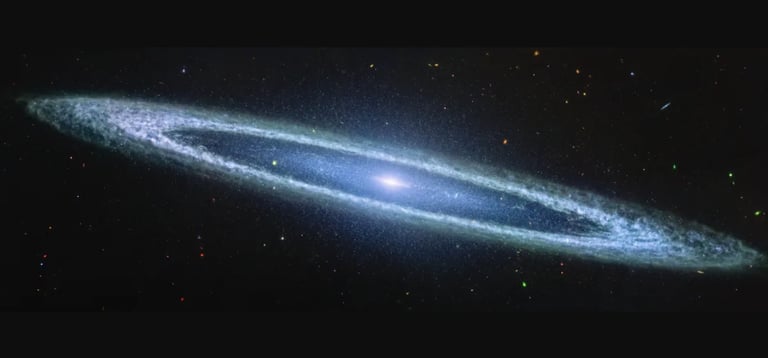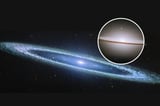JWST Captures Stunning Infrared Image of Sombrero Galaxy's Dusty Ring and Inactive Black Hole
November 25, 2024
The James Webb Space Telescope (JWST) has recently captured a stunning mid-infrared image of the Sombrero Galaxy, revealing intricate details of dust in its outer ring.
Located approximately 30 million light-years from Earth in the constellation Virgo, the Sombrero Galaxy features a central supermassive black hole with a mass equivalent to 9 billion suns, which is relatively inactive and consumes little material.
Despite its massive size, the Sombrero Galaxy has a low star formation rate, producing less than one solar mass of stars annually, which is significantly lower than the Milky Way's rate of one to two solar masses.
The galaxy is home to around 2,000 globular clusters, offering astronomers unique opportunities to study stellar evolution due to their rich stellar population.
The Sombrero Galaxy likely experienced a significant starburst event billions of years ago, depleting its gas reserves and resulting in its current slow star formation primarily in the dusty outer ring.
Observations of NGC 2090, another galaxy studied by the JWST, are part of a broader program focusing on nearby massive, star-forming galaxies.
The detailed images captured by the JWST are expected to serve as valuable resources for astronomers studying star formation for years to come.
This collaborative project between NASA, the European Space Agency, and the Canadian Space Agency aims to deepen our knowledge of cosmic phenomena.
As the JWST approaches its fourth year of operations in July 2025, it has seen a record number of 2,377 proposals submitted for observation time, reflecting the high demand for its capabilities.
The recent mid-infrared images also showcase a variety of distant background galaxies, which help astronomers assess their distances and properties.
In contrast to the relatively quiet activity of the Sombrero Galaxy, other galaxies like Messier 106 feature more active black holes that warp surrounding gas and create visible gas streamers.
The JWST has been operational since summer 2022, focusing on distant galaxies and local planets, and continues to advance our understanding of the universe.
Summary based on 14 sources
Get a daily email with more Science stories
Sources

Mashable • Nov 26, 2024
Webb telescope clears the haze around a stunning galactic icon
CBS News • Nov 26, 2024
Webb telescope captures stunning new image of the "Sombrero galaxy"
Newsweek • Nov 27, 2024
Hidden Core of 'Sombrero Galaxy' Revealed in NASA Images